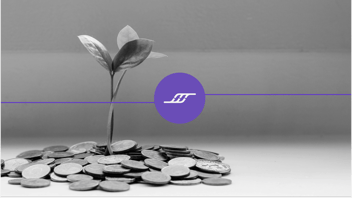On June 18th, Infostrux CEO, Goran Kimovski (Kima) sat down with S. Somasegar (Soma) to discuss Soma’s experience and lessons as a board member and early investor in Snowflake. Kima and Soma discuss the concept and value of the data cloud and why data exchange will be as crucial as data warehousing. As an active angel investor and seed investor, Soma describes what makes an excellent investment and what he looks for while investing in enterprise and consumer segments.
![]() Kima: Is there something specific you look at when making investment decisions? Is there something that makes one better than another in your experience?
Kima: Is there something specific you look at when making investment decisions? Is there something that makes one better than another in your experience?
![]() Soma: That’s a great question, Kima, but before I answer that, let me give you a little bit of context about what we do at Madrona Venture Group. That might help you think about investing in three stages:
Soma: That’s a great question, Kima, but before I answer that, let me give you a little bit of context about what we do at Madrona Venture Group. That might help you think about investing in three stages:
- Early stage
- Mid stage
- Later stage
Madrona has been around for over 26 years in Seattle. We are predominantly an early-stage venture capital firm focused on investing in information technology. Companies that are in the seed stage or Series A are our sweet spot. Historically, that is what we’ve been doing for the past 26 years and it has worked out really well for us.
About 3 – 5 years ago, we started thinking that we now have experience investing from day one for the long run with all these companies. We’ve seen a number of these companies scale to a considerable size and scope, get to the IPO milestone, and be publicly traded.
We also have experience in certain technology areas whether it’s cloud infrastructure (Seattle being the cloud capital) or machine learning or AI. So we felt as though we had some deep expertise in a few technology areas. We had seen enough companies go through a very early stage to a very late stage. So we thought we have enough experience and capability to invest in companies at the mid-stage, or what we call the acceleration stage – companies that are raising Series B or Series C, or even occasionally Series D. So we raised a second fund.
Today, we have two funds that we deploy out – one that is seed or Series-A focused, and one that is Series-B and Series-C focused. We have a platform that enables us to invest in companies from day one to mid-stage.
When we think about early-stage investments, oftentimes we meet entrepreneurs that have an idea or a slide deck, or pitch deck, but that’s all they have. They may even have a co-founder. So we have to make decisions about investing in a company at that stage. Now, when the company has made some progress, it has reached a Series B or Series C, then it’s different because we have to think about product-market fit. What are your customers saying, what is your land and expand strategy, what is your retention rate, and so on. But you have a set of metrics and enough signal or data from the market and from customers, which should be able to give us some kind of view into whether this is a big play or not. When you’re talking about the early stage, you don’t have any of that.
So to answer your questions specifically, Kima, particularly for early-stage companies, for me it starts with the caliber of the team, or maybe just the caliber of the founder, or a couple of co-founders. Because at the end of the day, it’s the people who are going to either make it or break it. It’s a combination of what have you accomplished, and what do I see in terms of your values, your attributes, how you think about things, your passion for what you’re trying to do, and whether you have what it takes to persevere to be able to navigate all the twists and turns to create some huge enterprise value.
So for me, it starts with the team.
Once you get some conviction about the team, then you think about the problem space that they’re going after, and whether the problem space is a real problem that we think people are going to want to see a solution to right away. Or, is this one of those nice to have things that people may get there or may not get there?
Sometimes we think of it as – are you building a painkiller, or are you building a vitamin? Knowing that you’re building a painkiller makes it even more exciting.
The third thing is how big is your vision, or how big is your dream, or how big is the opportunity size? Is it going to be a multibillion-dollar business, or is it going to be a 50-million-dollar business? We try to determine what it is going to be and try to get a view of what the opportunity size could look like.
The fourth thing that is important, both for us and for the entrepreneurs, is whether we are the right partners for you. Do we have some set of skills, some set of experience, do we do things in a particular way, we can be helpful in certain areas, is that what we’re looking for, is that what is going to be most helpful to you as you build and scale the company? If the answer is yes, then we absolutely want to invest.




